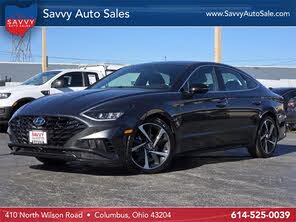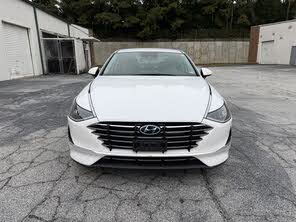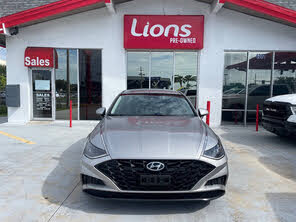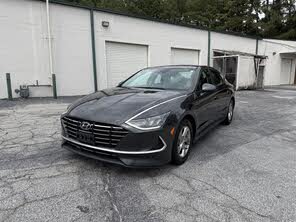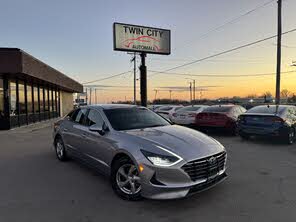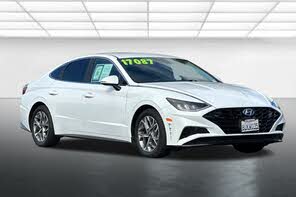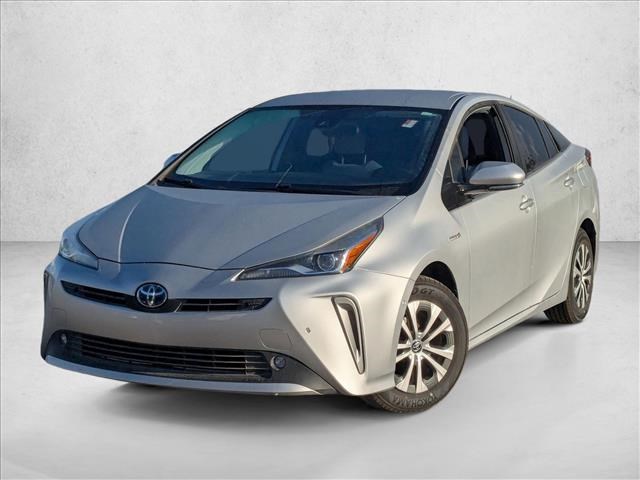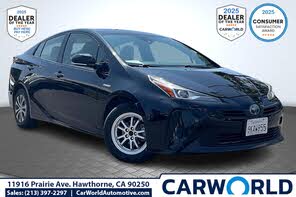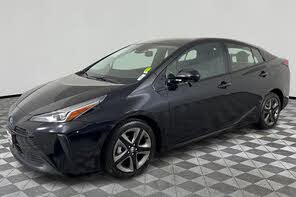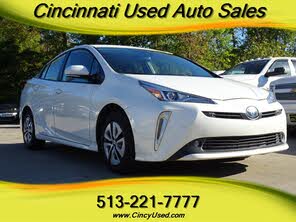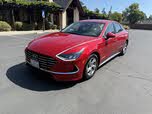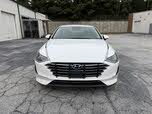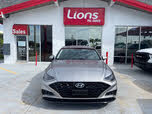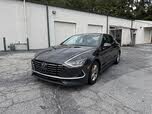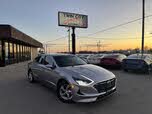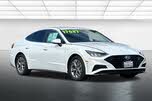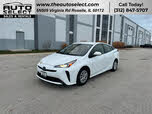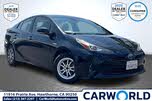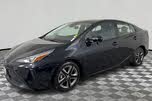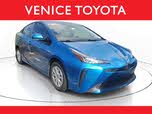2021 Hyundai Sonata vs 2020 Toyota Prius
Overview | |
MSRP$24,325 | MSRP$23,950 |
Listings132 | Listings755 |
Ratings & Reviews | |
User Reviews | User Reviews |
Expert reviews7.5 out of 10 | Expert reviews8.5 out of 10 |
Pros
Cons
| Pros
Cons
|
2020 Toyota Prius Reviews SummaryEver heard of an eponym? It’s a brand or product that is so popular that it’s come to define its respective market. Think of Kleenex for tissues or Band-Aid for medical bandages. For hybrids, the Toyota Prius has ascended to near-eponym status. It was one of the first—and remains one of the most popular—hybrids ever made. As automakers across the industry are rolling out more hybrid models, the Prius continues to be the standard-bearer of this genre. This is largely due to the fact that the Prius is a dedicated hybrid, rather than a hybrid variant of an existing model. Throughout the industry, different companies are taking different approaches to alt-fuel vehicles, including full-electric and hydrogen fuel cell powertrains. The Prius endures as the leader in hybrid power due to a focus on fuel efficiency that doesn’t compromise on style, drivability, and versatility. So how does the Prius hold its ground as more players enter the fray? Read on to find out. | |
2021 Hyundai Sonata Reviews SummaryIn a shrinking car market, the traditional sport sedan is increasingly rare. Designed and developed for people who prefer on-pavement performance but need passenger and cargo practicality, only a handful of dedicated non-premium sport sedans still exist, and most of those barely qualify for membership in the club. Enter the new 2021 Hyundai Sonata N Line, which addresses both performance and practicality in a compelling midsize package and at a bargain price. | |
No video found | |
Popular Features & Specs | |
Engine1.8L 121 hp I4 Hybrid | Engine2.5L 191 hp I4 |
Drive TrainFWD | Drive TrainFWD |
Seating Capacity5 | Seating Capacity5 |
Horsepower | Horsepower191 hp @ 6100 rpm |
EV Battery Capacity0.7 kWh | EV Battery Capacity |
MPG City58 | MPG City27 |
MPG Highway53 | MPG Highway37 |
Engine | |
Engine Name1.8L 121 hp I4 Hybrid | Engine Name2.5L 191 hp I4 |
Torque | Torque181 lb-ft @ 4000 rpm |
Horsepower | Horsepower191 hp @ 6100 rpm |
DrivetrainFWD | DrivetrainFWD |
Fuel Economy | |
EV Battery Capacity0.7 kWh | EV Battery Capacity |
MPG City58 | MPG City27 |
MPG Highway53 | MPG Highway37 |
Interior | |
Seating Capacity5 | Seating Capacity5 |
Safety | |
Front Crash Overall4 | Front Crash Overall4 |
Side Crash Overall5 | Side Crash Overall5 |
Dimensions & Capacity | |
Cargo Space27.4 cu ft | Cargo Space16.3 cu ft |
Curb Weight3010 lbs | Curb Weight3120 lbs |
Height57.9 in | Height56.9 in |
Length180.0 in | Length192.9 in |
Width69.3 in | Width73.2 in |
Wheelbase106.3 in | Wheelbase111.8 in |
Maximum Payload825 lbs | Maximum Payload1234 lbs |
Number of doors4 | Number of doors4 |
Overview | ||
MSRP | $24,325 | $23,950 |
Listings | ||
Ratings & Reviews | ||
User reviews | ||
Expert reviews | 7.5 out of 10Read full review | 8.5 out of 10Read full review |
Pros & cons | Pros
Cons
| Pros
Cons
|
Summary | Ever heard of an eponym? It’s a brand or product that is so popular that it’s come to define its respective market. Think of Kleenex for tissues or Band-Aid for medical bandages. For hybrids, the Toyota Prius has ascended to near-eponym status. It was one of the first—and remains one of the most popular—hybrids ever made. As automakers across the industry are rolling out more hybrid models, the Prius continues to be the standard-bearer of this genre. This is largely due to the fact that the Prius is a dedicated hybrid, rather than a hybrid variant of an existing model. Throughout the industry, different companies are taking different approaches to alt-fuel vehicles, including full-electric and hydrogen fuel cell powertrains. The Prius endures as the leader in hybrid power due to a focus on fuel efficiency that doesn’t compromise on style, drivability, and versatility. So how does the Prius hold its ground as more players enter the fray? Read on to find out. | In a shrinking car market, the traditional sport sedan is increasingly rare. Designed and developed for people who prefer on-pavement performance but need passenger and cargo practicality, only a handful of dedicated non-premium sport sedans still exist, and most of those barely qualify for membership in the club. Enter the new 2021 Hyundai Sonata N Line, which addresses both performance and practicality in a compelling midsize package and at a bargain price. |
Video | No video found | |
Popular Features & Specs | ||
Engine | 1.8L 121 hp I4 Hybrid | 2.5L 191 hp I4 |
Drive Train | FWD | FWD |
Seating Capacity | 5 | 5 |
Horsepower | 191 hp @ 6100 rpm | |
EV Battery Capacity | 0.7 kWh | |
MPG City | 58 | 27 |
MPG Highway | 53 | 37 |
Engine | ||
Engine Name | 1.8L 121 hp I4 Hybrid | 2.5L 191 hp I4 |
Torque | 181 lb-ft @ 4000 rpm | |
Horsepower | 191 hp @ 6100 rpm | |
Drivetrain | FWD | FWD |
Fuel Economy | ||
EV Battery Capacity | 0.7 kWh | |
MPG City | 58 | 27 |
MPG Highway | 53 | 37 |
Interior | ||
Seating Capacity | 5 | 5 |
Safety | ||
Front Crash Overall | 4 | 4 |
Side Crash Overall | 5 | 5 |
Dimensions & Capacity | ||
Cargo Space | 27.4 cu ft | 16.3 cu ft |
Curb Weight | 3010 lbs | 3120 lbs |
Height | 57.9 in | 56.9 in |
Length | 180.0 in | 192.9 in |
Width | 69.3 in | 73.2 in |
Wheelbase | 106.3 in | 111.8 in |
Maximum Payload | 825 lbs | 1234 lbs |
Number of doors | 4 | 4 |
The 2020 Toyota Prius maintained its iconic shape, reminiscent of a jellybean, which was optimized for aerodynamics. Over the years, Toyota subtly evolved the Prius's design to give it a more sedan-like appearance while retaining its hatchback functionality. The Prius's futuristic style, with its central instrumentation and gauges, continued to stand out, even as other manufacturers adopted similar design cues. The interior was defined by its unorthodox layout, which had been a hallmark of the Prius for over two decades.
In contrast, the 2021 Hyundai Sonata presented a bold redesign that was both distinctive and polarizing. Its broad grille and tapered tail made it instantly recognizable. The N Line version enhanced the Sonata's appeal with larger air intakes, gloss black accents, and 19-inch aluminum alloy wheels. The interior featured sport seats with Nappa leather and Dinamica suede, red stitching, and aluminum pedal covers, creating a sporty yet comfortable environment. The panoramic sunroof added to the sense of space and luxury.

















The 2020 Toyota Prius was powered by a 1.8-liter four-cylinder engine paired with an electric motor, delivering a combined 121 horsepower and 105 pound-feet of torque. It offered both front-wheel drive and an all-wheel-drive variant, the Prius AWD-e, which used a second electric motor for the rear wheels. The Prius provided smooth acceleration and seamless transitions between electric and conventional power. It featured three drive modes—EV, Eco, and Power—each catering to different driving preferences. The unique shifter design and engine braking mode added to its distinctive driving experience, making it an engaging yet efficient choice for daily commutes.
The 2021 Hyundai Sonata N Line, on the other hand, was equipped with a turbocharged 2.5-liter four-cylinder engine, producing an impressive 290 horsepower and 311 pound-feet of torque. It featured an eight-speed wet dual-clutch automatic transmission with paddle shifters and a launch control system. The Sonata N Line offered multiple driving modes, including Normal, Sport, Sport+, and Custom, along with an Active Sound Design system for enhanced engine notes. Its sport-tuned suspension, larger brakes, and 19-inch wheels contributed to its agile handling and performance, making it a thrilling option for driving enthusiasts.
The 2020 Toyota Prius made efficient use of its compact platform, offering spacious and comfortable front seats with ample headroom and legroom. The rear seats were also accommodating, though taller passengers needed to be cautious when entering. The Prius excelled in cargo space, providing 50.7 cubic feet with the rear seats folded and up to 27.4 cubic feet with them up, depending on the model. Its hatchback design facilitated easy loading of large items, enhancing its practicality.
The 2021 Hyundai Sonata N Line featured heated front sport seats with Dinamica suede inserts for comfort and support. While the rear seats offered less legroom compared to the front, they included air conditioning vents and a USB port for added convenience. The Sonata's trunk provided 16 cubic feet of space, with a 60/40-split folding rear seat for expanded utility. The Smart Trunk hands-free release feature added convenience, though the lack of an interior handle could be inconvenient when closing the trunk.
The 2020 Toyota Prius came standard with a 7-inch touchscreen infotainment system, offering Android Auto, Apple CarPlay, Bluetooth connectivity, and a WiFi hotspot. The Limited trim upgraded to an 11.6-inch screen with a customizable layout, though it lacked Android Auto. The Prius's top-center instrument panel displayed hybrid drivetrain status and other critical information, with an available head-up display for added convenience.
The 2021 Hyundai Sonata N Line featured a 12.3-inch digital instrumentation panel paired with a 10.25-inch touchscreen infotainment system. It included navigation, wireless smartphone charging, and a Bose premium sound system. The system supported Apple CarPlay, Android Auto, and Blue Link connected services, though it lacked a WiFi hotspot. The Sonata's infotainment system offered unique features like Sounds of Nature and Hyundai Digital Key, though some controls could be frustrating to use.
The 2020 Toyota Prius was equipped with Toyota Safety Sense 2.0, offering features like automatic emergency braking, forward-collision warning, lane-departure warning, adaptive cruise control, and automatic high beams. Optional features included blind-spot monitoring and rear cross-traffic alert. The Prius earned a five-star rating from the NHTSA and a "Top Safety Pick" from the IIHS, though it fell short of the highest rating due to average scores in certain tests.
The 2021 Hyundai Sonata N Line came with Hyundai's SmartSense ADAS, including adaptive cruise control, forward-collision warning, lane-keeping assistance, and more. It also featured Rear Occupant Alert and Safe Exit Warning systems. The Sonata's Highway Drive Assist provided Level 2 ADAS capabilities, enhancing driver confidence. While the N Line's crash-test ratings were not available, the standard Sonata rated high for occupant protection.
CarGurus highlights
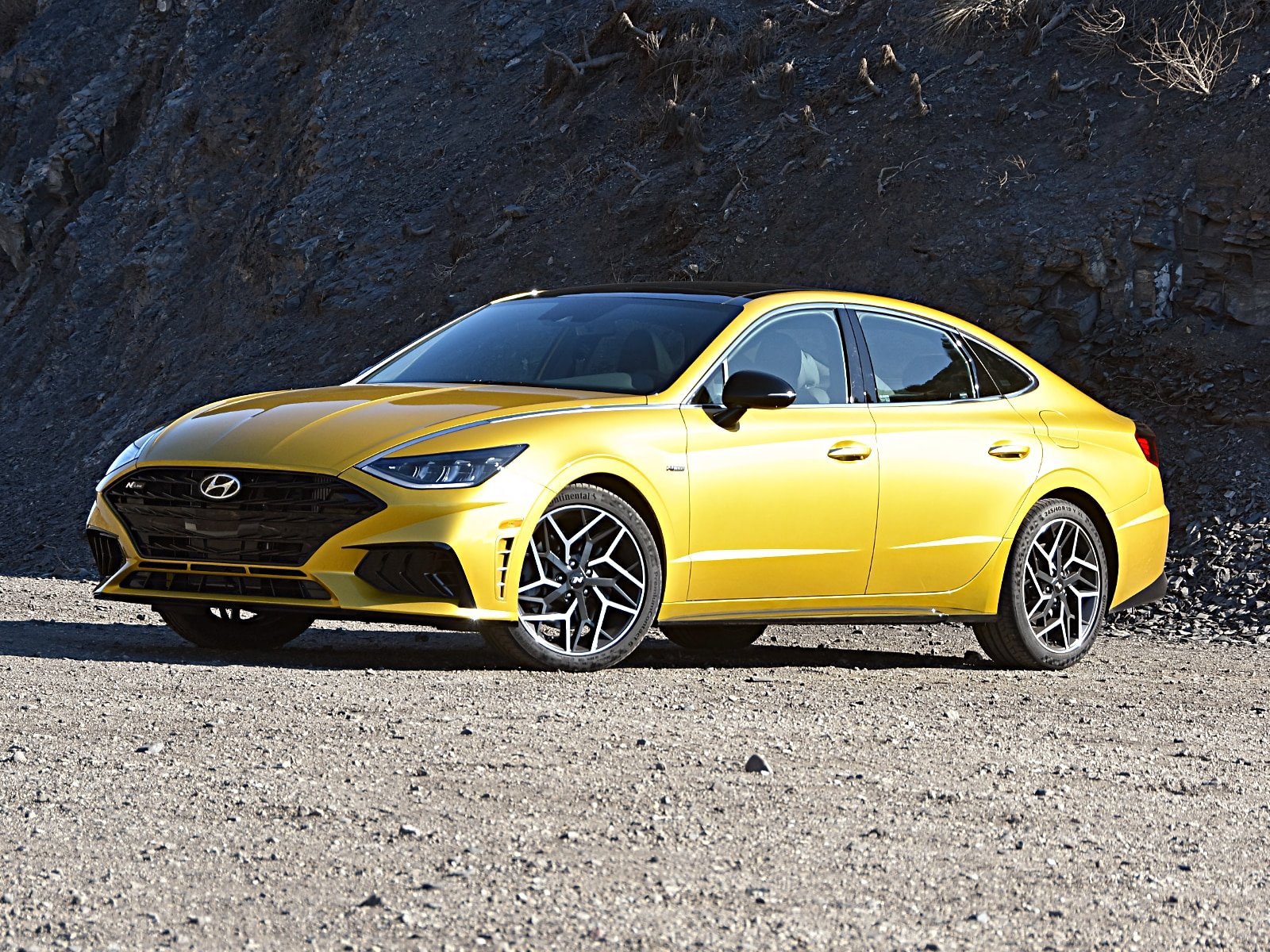
According to CarGurus experts, the overall rating for the 2020 Toyota Prius is 7.5 out of 10, while the 2021 Hyundai Sonata scores 8.5 out of 10. Based on these ratings, the 2021 Hyundai Sonata is the recommended choice, offering a more engaging driving experience, advanced technology, and a higher overall rating.
Choose the 2021 Hyundai Sonata if:
- You desire a powerful and sporty driving experience with turbocharged performance.
- You appreciate advanced technology features and a premium infotainment system.
- You seek a stylish and distinctive design with a comfortable interior.
Choose the 2020 Toyota Prius if:
- You prioritize fuel efficiency and seamless hybrid performance.
- You need a spacious and versatile cargo area with hatchback convenience.
- You value a comprehensive suite of standard safety features.
CarGurus highlights

According to CarGurus experts, the overall rating for the 2020 Toyota Prius is 7.5 out of 10, while the 2021 Hyundai Sonata scores 8.5 out of 10. Based on these ratings, the 2021 Hyundai Sonata is the recommended choice, offering a more engaging driving experience, advanced technology, and a higher overall rating.
Choose the 2021 Hyundai Sonata if:
Shop Now- You desire a powerful and sporty driving experience with turbocharged performance.
- You appreciate advanced technology features and a premium infotainment system.
- You seek a stylish and distinctive design with a comfortable interior.
Choose the 2020 Toyota Prius if:
Shop Now- You prioritize fuel efficiency and seamless hybrid performance.
- You need a spacious and versatile cargo area with hatchback convenience.
- You value a comprehensive suite of standard safety features.

By: CarGurus + AI
At CarGurus, our team of experienced automotive writers remain at the heart of our content operation, conducting hands-on car tests and writing insightful guides that are backed by years of industry experience. To complement this, we are harnessing AI to make our content offering more diverse and more helpful to shoppers than ever. To achieve this, our AI systems are based exclusively on CarGurus content, ratings and data, so that what we produce is both unique to CarGurus, and uniquely helpful to car shoppers.

